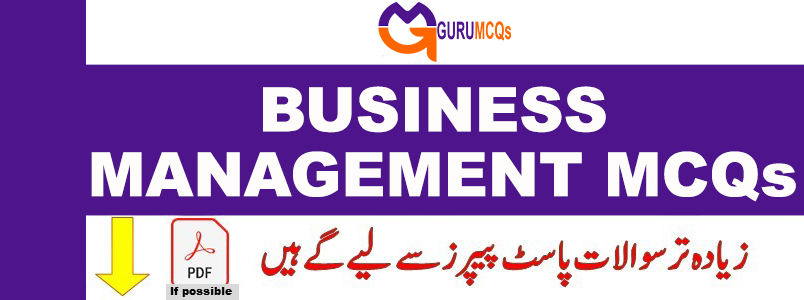
Enhance your preparation for a range of undergraduate, postgraduate, and entrance exams, including MCom, BCom, BBA, MBA, and others, with Business Management MCQs. These Marketing Management MCQs are also beneficial for NTS, FPSC, KPPSC, ETEA, and various other tests. Covering topics such as Business Communication, Communication Skills, Business Studies, Tally ERP, Capital Market, Business Economics, Enterprise Management, Strategic Management, and more, these MCQs provide answers and explanations. Additionally, you can find Human Resource Management (HRM) MCQs on the platform.
11. In developed markets you would expect to find:
A. the population under 15 years representing a large percentage of those aged 60 years or over.
B. the population under 15 years representing a small percentage of those aged 60 years or over.
C. the population under 15 years representing the same percentage of those aged 60 years or over.
D. the population under 15 years representing a very large percentage of those aged 60 years or over.
12. Compared with markets in Southern Europe, household sizes in markets in North West Europe are?
A. Small and the number of rooms per person is higher
B. Large and the number of rooms per person is higher
C. Large and the number of rooms per person is lower
D. Small and the number of rooms per person is lower
13. According to Hofstede (1983) culture is:
A. ‘that part of our conditioning that we share with other members of our nation with members of groups like ours in other nations.’
B. ‘that part of our conditioning that we share with other members of our nation, region, or group and with members of other nations, regions, or groups.’
C. ‘that part of our conditioning that we share with other members of our group but not with members of other groups.’
D. ‘that part of our conditioning that we share with other members of our nation, region, or group but not with members of other nations, regions, or groups.’
14. What were the four general approaches to social interaction that emerged from Hofstede’s research?
A. Village market, family, social circle and well-oiled machine
B. Village community, family, pyramid and well-oiled machine
C. Village market, family, pyramid and well-oiled machine
D. Village market, family, pyramid and dysfunctional machine
15. Which of these statements is correct?
A. A high number of inhabitants per retail outlet suggests a market with a undeveloped retail structure.
B. A low number of inhabitants per retail outlet suggests a market with a developed retail structure.
C. A high number of inhabitants per retail outlet suggests a market with a developed retail structure.
D. A high number of inhabitants per retail outlet suggests a market with a retail structure that lacks modern retail operations.
16. Concentration calculations measure:
A. the number of outlets one retailer has in a market.
B. the number of retail businesses in a market.
C. the share of a market held by one retailer or a group of retail enterprises.
D. the number of consumers per retail outlet.
17. Which of these statements is correct?
A. As enterprise density decreases, so the ratio of non-food to food retail outlets rises.
B. As enterprise density increases, so the ratio of non-food to food retail outlets rises.
C. As enterprise density decreases, so the ratio of non-food to food retail outlets decreases.
D. As enterprise density increases, so the ratio of non-food to food retail outlets decreases.
18. Which of these statements is correct?
A. Innovation will tend to flow to markets that are more advanced than the market that provides the innovation.
B. Innovation will tend to flow to markets that are less advanced than the market that provides the innovation.
C. Innovation will tend to originate in markets that are less advanced markets.
D. Innovation will tend to originate in markets that are heavily regulated.
19. Emerging markets today are attractive to large retail enterprises from highly developed markets because:
A. they provide risk free investment opportunities.
B. they provide new sources of innovative retailing practices.
C. they promise opportunities for international retailers’ to experiment with new retail formats before transferring the concept to the domestic market.
D. they promise to sustain the international retailers’ levels and rate of growth.
20. Which of these strategic options describes retailers’ usual route to international expansion?
A. The business maintains its present product lines and expand into new markets in which it is not currently operating.
B. The business penetrates the market in which it already operates to a great extent.
C. The business expands into new product areas in the same market in which it already operates.
D. The business expands into new product areas and expands into new markets in which it is not currently operating.
